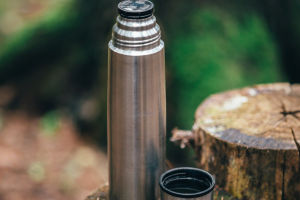Explore Oman Without Splurge

Dreaming of Oman's sweeping deserts and rugged mountains without draining your savings? With smart planning and local insights, you can explore this enchanting land on a shoestring.
From currency hacks to free adventures, discover how to savor Oman's treasures—while keeping your wallet happy.
Currency Know‑How
Oman's currency, the rial (OMR), divides into 1,000 baisa. The exchange rate hovers around 1 OMR. ATMs are widespread in Muscat, Nizwa, and Salalah; Bank Muscat machines charge about 0.50 OMR per withdrawal. Plan to carry small baisa notes (100–500 baisa) for market stalls and roadside snacks that often won’t take cards.
Card Usage
Credit cards are accepted in most hotels, larger restaurants, and shops but not in taxis or remote cafés. Notify your bank before departure to avoid blocks. Always keep 20–30 OMR in cash for fuel (gas costs about 0.23 OMR per liter) and incidental purchases in villages and wadis.
ATMs & Exchange
Airport ATMs dispense both rials and USD; airport exchange counters charge a 3% commission. In city centers, currency exchange offices inside malls and souqs offer rates within 1% of the mid‑market price. Limit exchanges to one major transaction to minimize fees, then supplement with ATM withdrawals as needed.
Travel Solo
Skip pricey group tours and embrace independent travel. Oman's Ibra–Muscat coastal highway links beaches and towns within a single day's drive. Shared taxis between cities cost 5–7 OMR per person. Hitching a ride on minibuses in Salalah or Sohar can cost as little as 0.50 OMR for short hops.
Car Rentals
Renting a compact car from major agencies in Muscat Airport starts at 12 OMR/day with basic insurance included. Booking two weeks in advance online can save up to 30%. Fuel is cheap—around 0.23 OMR per liter—so consider a sedan for most of your trip, and upgrade to a 4WD (from 25 OMR/day) only for Wadi Bani Khalid or the Empty Quarter.
Route Planning
Plan a loop from Muscat to Nizwa, Jebel Shams, and Wahiba Sands over five days to minimize backtracking. Average daily driving spans 200–300 km, taking 3–4 hours between main stops. Use Maps offline to avoid roaming data charges. Factor in 30-minute stops at scenic viewpoints and local cafés for a sustainable pace.
Local Eats
Dining in Oman can be affordable if you choose wisely. Street‑side shawarma wraps cost around 1.50 OMR, and a hearty majboos plate runs 2.50 OMR in local cafés. In Muscat's Muttrah Corniche, seafood grills start at 3 OMR. Look for lunchtime specials (12 PM–3 PM) in mid‑range restaurants for 20% discounts.
Cheap Stays
Budget accommodations range from hostels in Muscat (6 OMR per bed in a dorm) to guesthouses in Nizwa (10–12 OMR for a private room). Airbnb offers charming Omani flats from 15 OMR/night. In Salalah, palm‑grove homestays start at 18 OMR, including breakfast. Book early in peak season (December–February) to lock in low rates.
Desert Camping
A night under the stars in Wahiba Sands typically costs 15–20 OMR per person for a basic Bedouin camp, inclusive of dinner and breakfast. For self‑sufficient adventurers, wild camping is allowed: pitch a tent near Al Khaluf beach or Jebel Akhdar for free, but pack your own water (1 OMR per 1 L) and supplies.
Selective Sightseeing
Entrance fees vary: Nizwa Fort costs 0.50 OMR; Jebel Shams Balcony Walk is free; Wahiba cultural village charges 1 OMR for a guided falaj demonstration. Prioritize sites with the best value and skip those with steep fees, like ticketed water parks. Many historic castles and natural pools can be admired from outside at no cost.
Free Activities
Oman's natural wonders largely invite zero‑cost adventures. Hike Wadi Shab or Wadi Tiwi for stunning canyons and freshwater pools (no entrance fee). Stroll Muscat's Corniche at sunrise, explore the colorful Muttrah Souq, or picnic beneath ancient acacia trees in Qurum Natural Park. Don't miss the nightly dhow parade—free and spectacular.
Cultural Sensitivity
Respect local customs by dressing modestly: shoulders and knees covered. This avoids potential fees for rented abayas at sites like the Sultan Qaboos Grand Mosque, where entry is free but hijab rentals cost 2 OMR. Mindful attire ensures seamless access and enhances genuine connections with Omanis.
Embrace Spontaneity
Friendly locals often invite travelers to camel farms, date plantations, or private mountain tea gatherings. These spontaneous detours typically cost little or nothing and yield authentic experiences. Keep a few extra baisa on hand for small tokens of gratitude—a box of dates for 0.75 OMR or a cup of sweet coffee for 0.50 OMR.
Market Finds
Souq bartering is part of the fun. At Nizwa Souq, haggle down a handcrafted khanjar (dagger) from 20 OMR to around 15 OMR. In Muttrah Souq, colorful pashmina shawls start at 3 OMR if you negotiate. Always start offers 30% below the asking price, then meet halfway for a fair deal.
Stay Connected
Local SIM cards from Omantel or Ooredoo cost 5 OMR, including 5 GB of data—enough for navigation and social check‑ins. Top‑ups run 2 OMR per 2 GB. Free Wi‑Fi exists in most malls and hotel lobbies. A modest VPN subscription ensures secure browsing on public networks.

Conclusion
Oman need not be a luxury-only playground. By mastering currency tricks, choosing budget transport, and prioritizing free and low‑cost experiences, you can enjoy its grandeur without overspending. With these money‑saving strategies in hand, your Omani odyssey will be rich in memories—and light on your budget.
-
 Affordable Wedding Ideas10 Stunning DIY Wedding Centerpieces That Will Wow Your Guests!
Affordable Wedding Ideas10 Stunning DIY Wedding Centerpieces That Will Wow Your Guests! -
 Sleeping Water LilyWhy Do Water Lilies "Sleep"? The Fascinating Reason Behind Their Flower Closing Rituals Revealed!
Sleeping Water LilyWhy Do Water Lilies "Sleep"? The Fascinating Reason Behind Their Flower Closing Rituals Revealed! -
 Avoid In Thermos: What?Think your thermos can handle anything? Think again! Find out what you should NEVER put inside!
Avoid In Thermos: What?Think your thermos can handle anything? Think again! Find out what you should NEVER put inside!